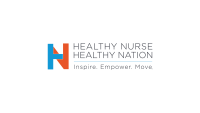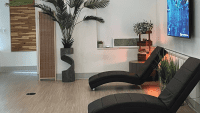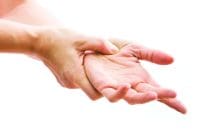As a nurse, you know the benefits of regular exercise, but you may have difficulty fitting exercise into your busy day at work and at home. The good news: Virtually anyone can do exercises on the go. Whether you’re standing at your workstation, driving a car, waiting in line at the grocery store, or preparing a meal at home, you can do the exercises described below without having to squeeze yet another activity into your schedule.
Exercises you can do on the go include stretching and strengthening various muscle groups. Stretching exercises provide instantaneous physical and mental release while helping prevent repetitive strain injuries. Stretching rebalances your body, slows the heart rate, lowers blood pressure, helps regulate hormones for mood and emotion, modulates metabolism, energizes your body, relaxes your muscles, calms your mind, guards muscles against injury, and makes you more productive (both physically and mentally). When doing the stretches described, hold each pose for three to five slow, deep breaths.
Strengthening exercises improve circulation, reduce blood pressure, help prevent bone loss, reduce heart-disease risk, lower cholesterol and glucose levels, help manage stress and weight, improve sleep, and increase your energy level. You can incorporate strengthening exercises into daily activities that require you to stand or sit. Remember to stretch the muscles afterwards. (See Tips for on-the-go exercising by clicking the PDF icon above.)
Neck and shoulder stretch
With your arms extended straight in front of you, interlace your fingers and push your arms away from your body. Drop your chin to your chest and hold for a few breaths. Then, looking straight ahead, raise both arms above your head, pushing up toward the ceiling, and hold. Lean to one side for a torso stretch. Repeat the maneuver on the other side.
Arm and shoulder stretch
Extend your right arm in front of you and bring it across your chest, using your left hand to pull your right arm in toward your body; then hold. Then switch arms to stretch the other side.
You can change this stretch by extending your arm straight above your head, bending your elbow and dropping your hand behind your shoulder, with elbow pointing toward the ceiling. Use your other hand to gently push or pull the arm toward your back to stretch; then hold. Switch arms.
Arms: Median nerve stretch
When working at a computer, do this arm lift every 30 minutes to release tension on the median nerve: Raise your right arm out to your side just below shoulder height and turn your palm outward, away from the body. Keeping your arm straight, point your fingers toward the rear with your thumb up, and tilt your head away from your arm. Hold for three breaths, then relax. Repeat three times; then stretch your left arm in the same way.
Arms: Radial nerve stretch
Stretch your radial nerves by holding both arms by your side with elbows straight and curling your fingers in to make a loose fist. Bend your wrists in toward your forearms, and slightly lift your hands behind you. Hold for two breaths, release, and repeat three more times. Do this stretch every half-hour when at your computer.
Chest stretch
To counteract poor posture or hunching over a workstation, place your fingertips at the back of your head and squeeze your shoulder blades together.
Wrist, forearm, and finger strengthening
Extend your right arm in front of your body, and rotate the arm so your fingers are pointing down. Place your left hand in the palm of your right hand; gently pull your fingers in toward in your body with elbows bent slightly. Then stretch your wrist, fingers, and right forearm; hold for a few breaths. Then switch arms
Abdominal strengthening
Tighten your abdominal muscles (abs, officially known as the rectus abdominis or stomach muscles) and keep them tightened for three to five breaths, or the time it takes to complete a specific task.
When driving, contract your abs each time you hit the brakes; hold the contraction until you’re moving again. When not driving, follow with an ab stretching by raising your arms straight above your head and reaching upward.
One-leg balance (glutes, hamstrings, quads)
Standing with your feet hip-width apart, raise one foot off the floor. Tighten muscles of the leg you’re balancing on, keeping the knee “soft”; hold for three to five breaths. Switch to the other leg.
To stretch these muscles, stand with feet hip-width apart; bend forward at the hips, keeping your back straight. Place one leg forward, heel on the floor, toes up. Rest your hands on your back leg. Hold, breathe, and when ready, return to standing and stretch the other leg. This exercise works the gluteal muscles (glutes), hamstrings, and quadriceps.
Side leg lift (iliotibial [IT] band, lateral thigh): Standing
While standing, balance on one leg and lift your other leg out to the side. Keeping your foot flexed with toes pointing forward and leg straight, lift and lower the leg 10 times. Then switch legs.
To stretch the IT band, cross your right leg behind your left leg and reach your right arm up and over to your left side, forming a “C” or half-moon pose. Switch legs and arms.
Side leg lift (IT band): Sitting
While sitting, lift your right knee and rotate it out to the right side; then return it to center. Do 10 repetitions; then switch legs for 10 repetitions. To stretch, place your hands around your knee and pull it up and toward your opposite shoulder; hold. Then repeat with the left leg.
Heel raises (calf strengthening)
You can strengthen your calves when standing or sitting by doing simple heel raises. Rise up on your toes, lifting both heels as high as you can; then squeeze your calf muscles. Slowly lower your heels to the floor. Do 20 raises. Then stretch your calves by placing your hands on a wall with your feet a few steps behind you so you’re leaning at an angle toward the wall, with heels firmly on the floor. Keep your arms bent and legs straight; hold for three to five breaths.,/p>
Reaping the benefits
You don’t need to add another task to your to-do list. Just incorporate these exercises into your daily tasks, and you’ll start to reap the benefits.
Selected references
Dr. Oz’s 20-minute workout. http://www.oprah.com/health/Dr-Ozs-20-Minute-Workout/7#ixzz1mhr4wOnk. Accessed March 27, 2012.
Exercise: 7 benefits of regular physical activity. July 31, 2011. http://www.mayoclinic.com/health/exercise/HQ01676. Accessed March 19, 2012.
Shelter Online. How to stretch. www.shelterpub.com/_fitness/_stretching_in_the_office/sto-intro3.html. Accessed March 27, 2012.
A group fitness instructor certified by the Aerobics and Fitness Association of America, Karen Pratt Willis lives in Gastonia, North Carolina.

















